Written by Nick Ackerman, co-produced by Stanford Chemist.
It was nearly a year ago when I last covered Nuveen Core Equity Alpha Fund (NYSE:JCE). The fund overall was fairly decent, but my biggest gripe was the fund’s valuation. It was trading with an incredibly volatile discount/premium. At one point, it spiked up to a nearly 25.5% premium before shooting back down, and that was after coming from a mid-single-digit discount.
Here is a closer look at the discount/premium table from that previous article that highlighted how volatile it was around the ex-dividend time, which I believe is the driving factor for pushing the premium around. The year-end special that the fund paid with an ex-dividend date of October 14. It was nearly double the regular quarterly distribution at the time.
JCE Discount/Premium Table From Prior Coverage (CEFConnect/author’s previous article (highlights from author))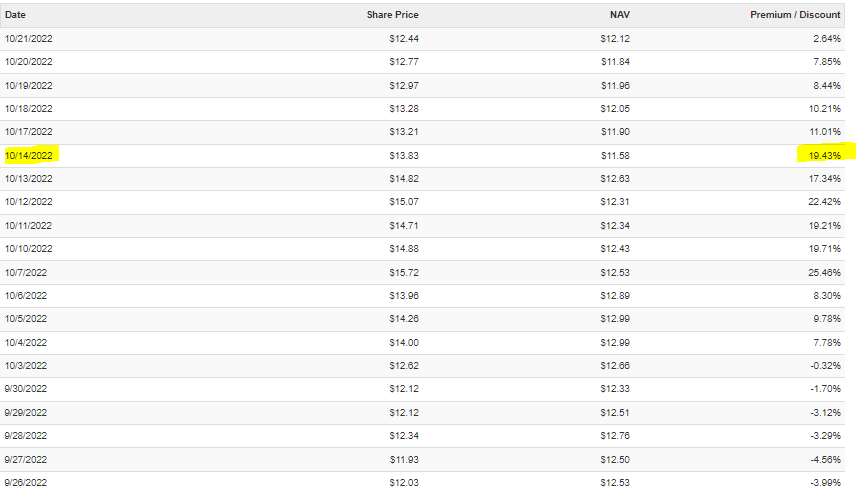
Besides being overvalued when I covered the fund last, the fund’s distribution also didn’t look sustainable to me. In fact, they actually went and cut the distribution not the following quarter but the one right after that. They took it from $0.3952 per quarter to $0.32, or a 19% reduction.
JCE Distribution History (CEFConnect)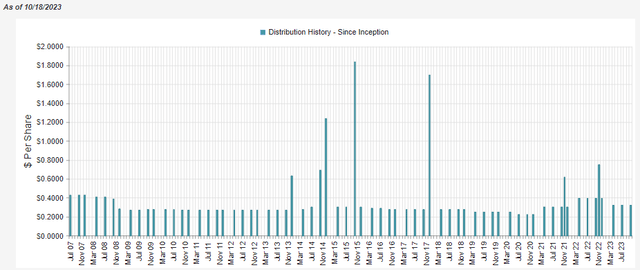
Today, the NAV rate is still just over 10%, which means it might not be entirely sustainable, but it is looking much better now than it did previously when it was over 13%. Part of the reduction could have come from the special being paid out itself, which saw a sizeable portion of the fund’s total assets come out of the fund. When combined with the regular distribution at the time, around $1.15 was paid out of the fund in the last quarter of 2022. That was just over 9% of the fund’s net assets heading into October before the special ex-dividend date.
How Did The Alternatives Do?
At that time, I also provided a couple of names that could be alternatives while waiting for a more rational valuation on that fund. That included First Trust Enhanced Equity Income Fund (FFA) and Voya Global Advantage and Premium Opportunity Fund (IGA). With that, I wanted to do a check-up on how that is playing out, and I can’t say that I’m overly surprised with the results.
All three of these are similar funds that employ a call-writing strategy, but FFA is a more closely related fund than IGA. IGA incorporates global investments and takes a value-oriented approach. At the time, it was a true value in more than that sense, too, as the fund’s discount was ~14% compared to JCE’s 2.64% premium and FFA’s 6.73% discount.
IGA was the cheapest fund on an absolute and relative basis. JCE was the most expensive on an absolute and relative basis. FFA was the middle of the pack but invested in a heavier tech portfolio that was ready to rebound significantly heading into 2023.
With that being said, here are the results and a highlight of why valuations can matter so much.
Ycharts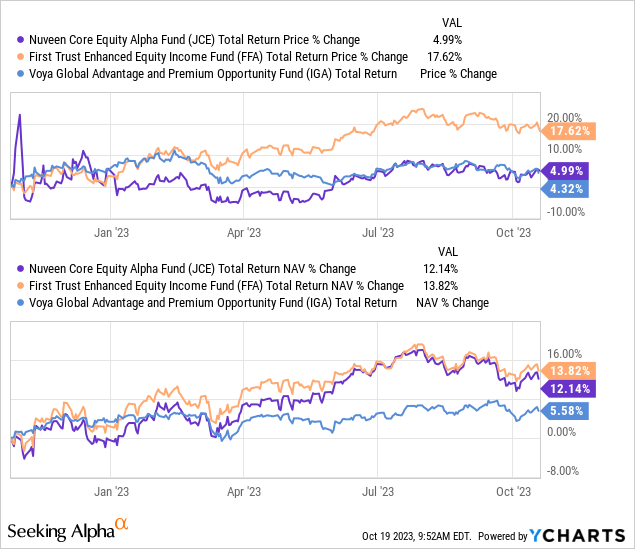
When the article was posted, it wasn’t catching when JCE was at the most extreme premium. As mentioned, at the time, JCE’s discount was only 6%, but that represented an expensive fund when the fund sported an average discount of around -4%. The fund then also rose rapidly to another 30% premium after the ex-dividend date and the posting of my article. I am at a bit of a loss on what the rationale would be for investors in that move. Overall, JCE experienced quite a volatile few years in terms of its discount/premium.
JCE Discount/Premium History (CEFConnect)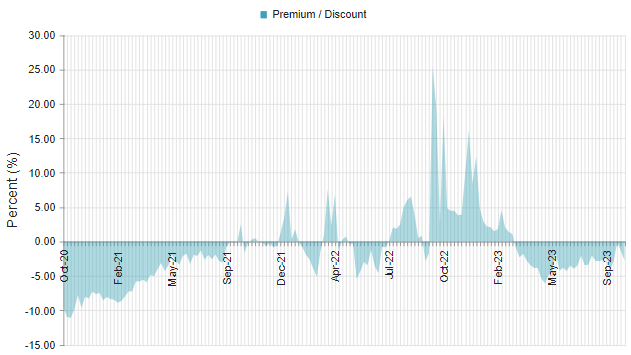
That being said, during the time since my last update, FFA saw its discount narrow, but it remains slightly discounted today. Most of the results here we are seeing are the result of a significant rebound in its underlying portfolio, as represented by the fund’s total NAV return.
If you noticed, FFA and JCE had very similar total NAV returns during this period. They are positioned fairly similarly with heavier weights in the technology sector. JCE’s portfolio has a 28.5% allocation to the Magnificent Seven names in its top ten. Alternatively, IGA was the biggest laggard, as its value-oriented portfolio sort of did nothing. In fact, today, IGA’s discount has actually expanded to 16.08% now.
Still, we can see that JCE still only performed on a total share price basis virtually the same as IGA despite over double the performance on its underlying portfolio.
What’s Worth Buying Now?
Today, IGA would still remain the value play with its value-oriented portfolio and deep discount. Earlier in the year, we saw some promising discount contraction, but that has reversed, and we are actually heading near all-time discount lows, excluding the GFC and Covid crashes.
On the other hand, JCE is still expensive and now so is FFA. With IGA being such a different fund, it wouldn’t necessarily be a great swap partner, but it is still one that I believe has merits going forward.
Ycharts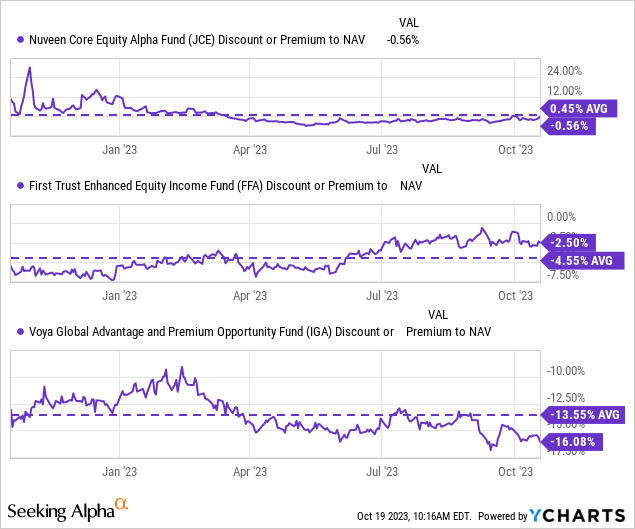
That said, if one wants to consider a more tech-oriented portfolio with a call-writing strategy that would provide a more similar approach that JCE and FFA take, I will introduce another fund into this mix. Though this is a popular fund and most probably doesn’t need an introduction, that would be the Eaton Vance Tax-Managed Buy-Write Opportunities Fund (ETV).
Over the last year, these funds have performed quite similarly on a total NAV return. However, you might notice that the biggest laggard on a total share price basis was ETV.
Ycharts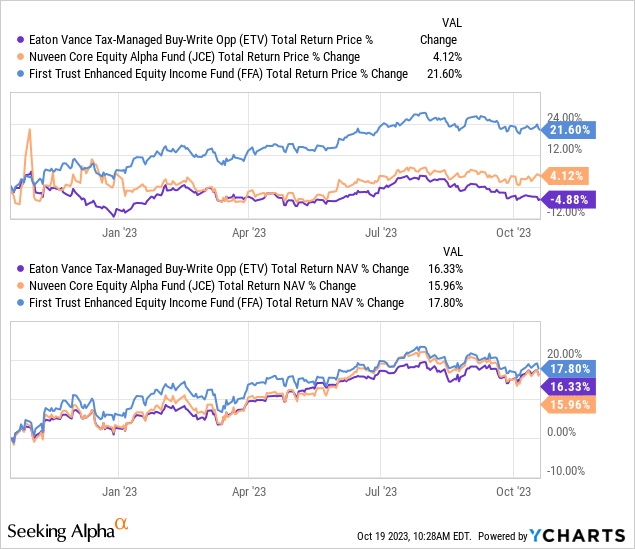
With that being the case, ETV has slumped to an attractive discount on an absolute and relative basis.
Ycharts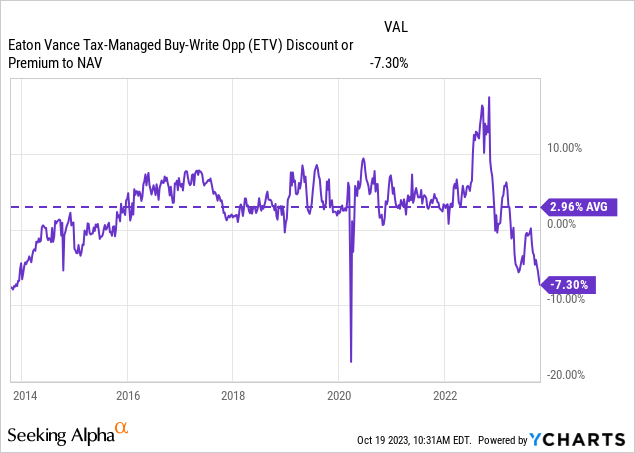
Conclusion
Overall, the general takeaway I wanted to highlight was that this is another example of why valuations matter – on an absolute and relative basis for closed-end funds. The discussion of JCE versus FFA and IGA just provided the framework of the discussion as it worked out basically as expected.
More specifically, on the funds discussed today, JCE and FFA appear expensive. IGA is a value-oriented portfolio and is the value play I’d go with today. However, if one is looking for a more comparable portfolio in terms of a growth-oriented investment approach, I’d introduce ETV to this mix. The portfolio is the more attractive alternative that investors in JCE and FFA could consider until those valuations come back to more attractive levels.
Read the full article here



